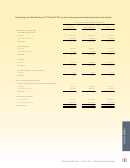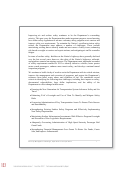Performance And Accountability Report - Fiscal Year 2013 - Federal Aviation Administration - U.s. Department Of Transportation Page 13
ADVERTISEMENT
 1
1  2
2  3
3  4
4  5
5  6
6  7
7  8
8  9
9  10
10  11
11  12
12  13
13  14
14  15
15  16
16  17
17  18
18  19
19  20
20  21
21  22
22  23
23  24
24  25
25  26
26  27
27  28
28  29
29  30
30  31
31  32
32  33
33  34
34  35
35  36
36  37
37  38
38  39
39  40
40  41
41  42
42  43
43  44
44  45
45  46
46  47
47  48
48  49
49  50
50  51
51  52
52  53
53  54
54  55
55  56
56  57
57  58
58  59
59  60
60  61
61  62
62  63
63  64
64  65
65  66
66  67
67  68
68  69
69  70
70  71
71  72
72  73
73  74
74  75
75  76
76  77
77  78
78  79
79  80
80  81
81  82
82  83
83  84
84  85
85  86
86  87
87  88
88  89
89  90
90  91
91  92
92  93
93  94
94  95
95  96
96  97
97  98
98  99
99  100
100  101
101  102
102  103
103  104
104  105
105  106
106  107
107  108
108  109
109  110
110  111
111  112
112  113
113  114
114  115
115  116
116  117
117  118
118  119
119  120
120  121
121  122
122  123
123  124
124  125
125  126
126  127
127  128
128  129
129  130
130  131
131  132
132  133
133  134
134  135
135  136
136  137
137  138
138  139
139  140
140  141
141  142
142  143
143  144
144  145
145  146
146  147
147  148
148  149
149  150
150 HISTORY OF AVIATION
Orville Wright made the first sustained, powered flight on
end of World War II, little had been done to mitigate the risk of
December 17, 1903, in a plane that he and his brother Wilbur
midair collisions.
built. This 12-second flight led to the development of the first
Accidents like these spurred passage of the Federal Aviation
practical airplane in 1905. The early twentieth century witnessed
Act of 1958, which transferred Civil Aeronautics Administration
countless aviation developments as new planes and technologies
functions to a new independent body, the Federal Aviation
entered service. During World War I, the airplane also proved
Agency. On April 1, 1967, the Federal Aviation Agency became
its effectiveness as a military tool and, with the advent of
one of several organizations within the U.S. Department of
early airmail service, showed great promise for commercial
Transportation (DOT) and was named the Federal Aviation
applications.
Administration (FAA).
The first lighted airway was a 72-mile strip between Dayton
Today, the FAA’s air traffic control system is one piece of
and Columbus, OH, constructed by the Army in 1921, using
the national airspace system which consists of a complex
rotating beacons, field floodlights, and flashing markers. As air
network of systems and aircraft, combined with the people
travel increased, some airport operators, hoping to improve
who certify, operate, and maintain them. The network includes
safety, began providing an early form of air traffic control. Early
more than
19,455
airports,
568
air traffic control facilities,
controllers stood on the field and waved flags to communicate
and approximately
65,000
other facilities, including radar,
with pilots. Development of radio navigation in the 1920s was
communications nodes, ground-based navigation aids, computer
conducted by the Post Office Department, the Navy, the Army,
displays, and radios, that operate unceasingly to provide safe
and the Bureau of Standards, using radio transmitters on the
and efficient flight services for users.
Over 46,000
FAA personnel
ground and aircraft receivers with directional antennas on board.
and approximately
608,000
pilots operate more than
228,000
Based on ideas from the Bureau of Standards, the Army, and
aircraft within the national airspace system. American air traffic
other sources, a radio system was developed during the course
controllers can be responsible for up to 2,850 flights at any given
of the 1920s that would guide an aircraft along a chosen course
moment, half of the world’s air traffic.
and require only simple airborne equipment. With the placement
of radio beacons along the airways, air commerce in the United
The system operates non-stop, 24 hours a day, every day of the
States grew, even during the Great Depression of the 1930s.
year, providing safe air transportation for millions of passengers.
Under agreement with the International Civil Aviation
On June 30, 1956, a Trans World Airlines Super Constellation
Organization (ICAO), a specialized United Nations agency
and a United Air Lines DC-7 collided in Arizona, over the Grand
dedicated to air transportation and navigation, the national air
Canyon, killing all 128 people on board the two airplanes. The
space system not only spans the country, but extends across
collision occurred while the aircraft were flying under visual flight
the Atlantic, Pacific, and Arctic oceans. It also interfaces with
rules in uncongested airspace. The accident dramatized the fact
neighboring countries’ air traffic control systems for international
that, even though U.S. air traffic had more than doubled since the
flights.
Passengers boarding a plane on a rainy day at the municipal airport in
An airlines hostess. Municipal airport, Washington, D.C. From the Farm
Washington, D.C. From the Farm Security Administration—Office of War
Security Administration—Office of War Information Photograph Collection,
Information Photograph Collection, Library of Congress.
Library of Congress.
11
|
|
Federal Aviation Administration
Fiscal Year 2013
Performance and Accountability Report
ADVERTISEMENT
0 votes
Related Articles
Related forms
Related Categories
Parent category: Business









